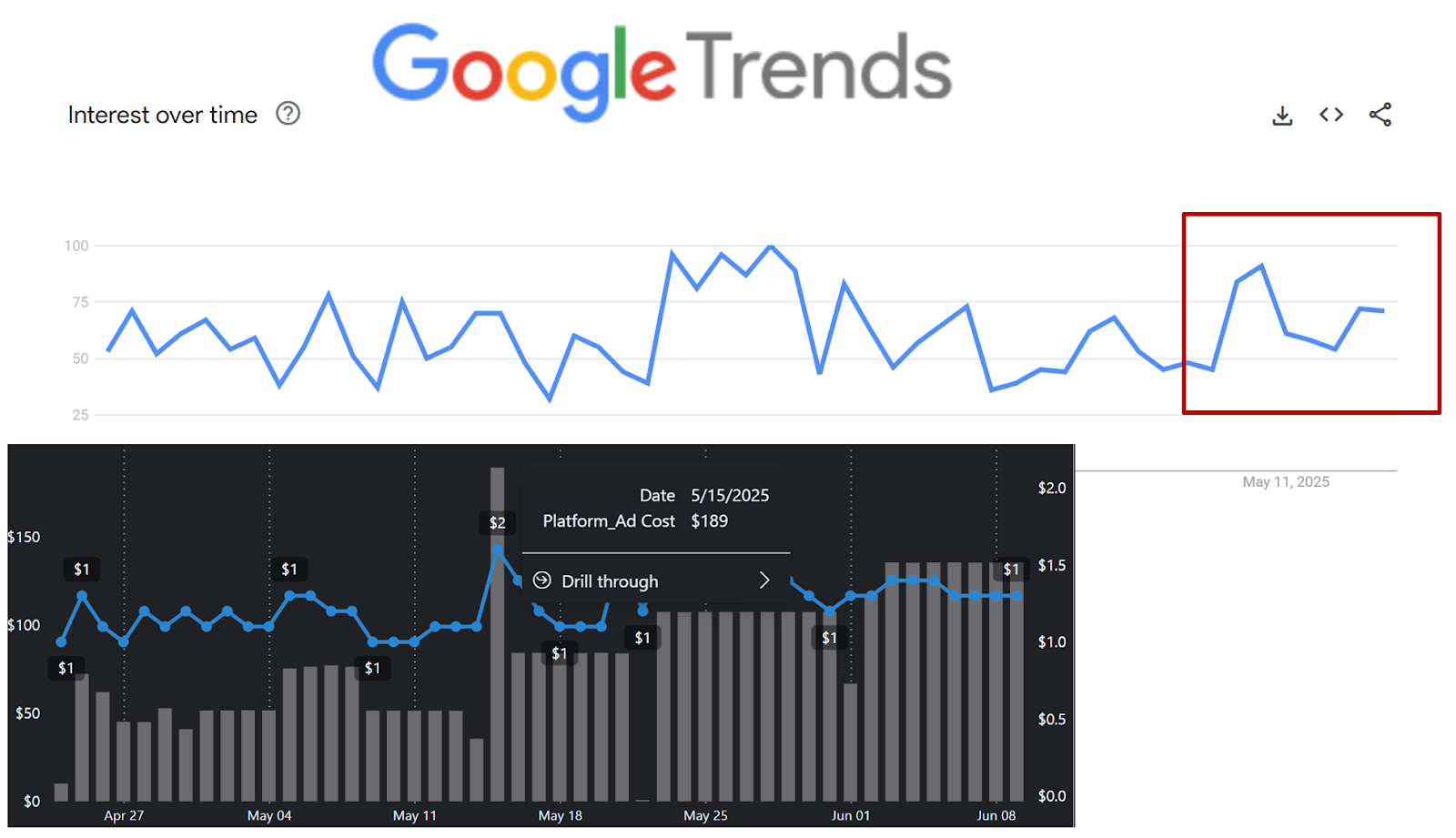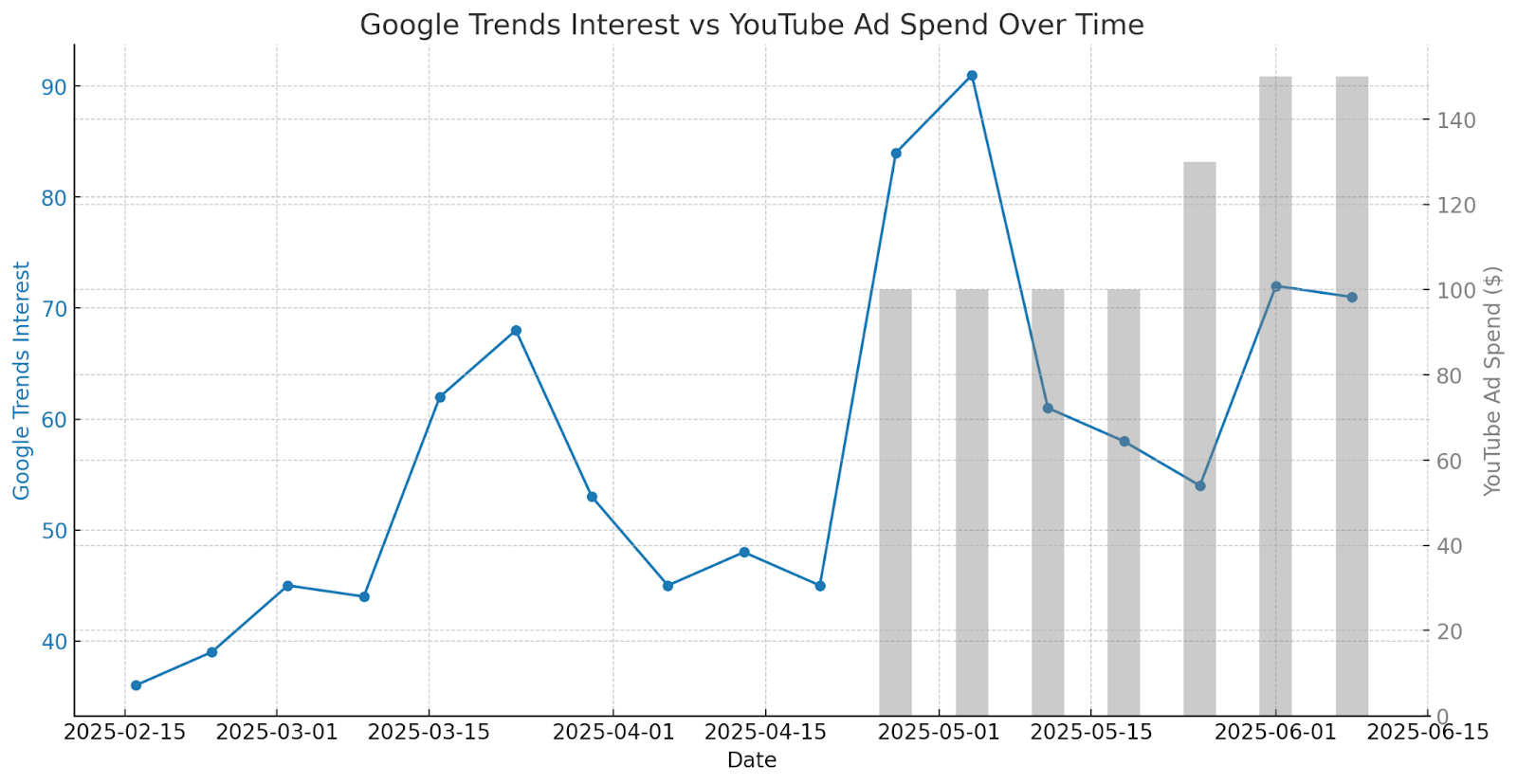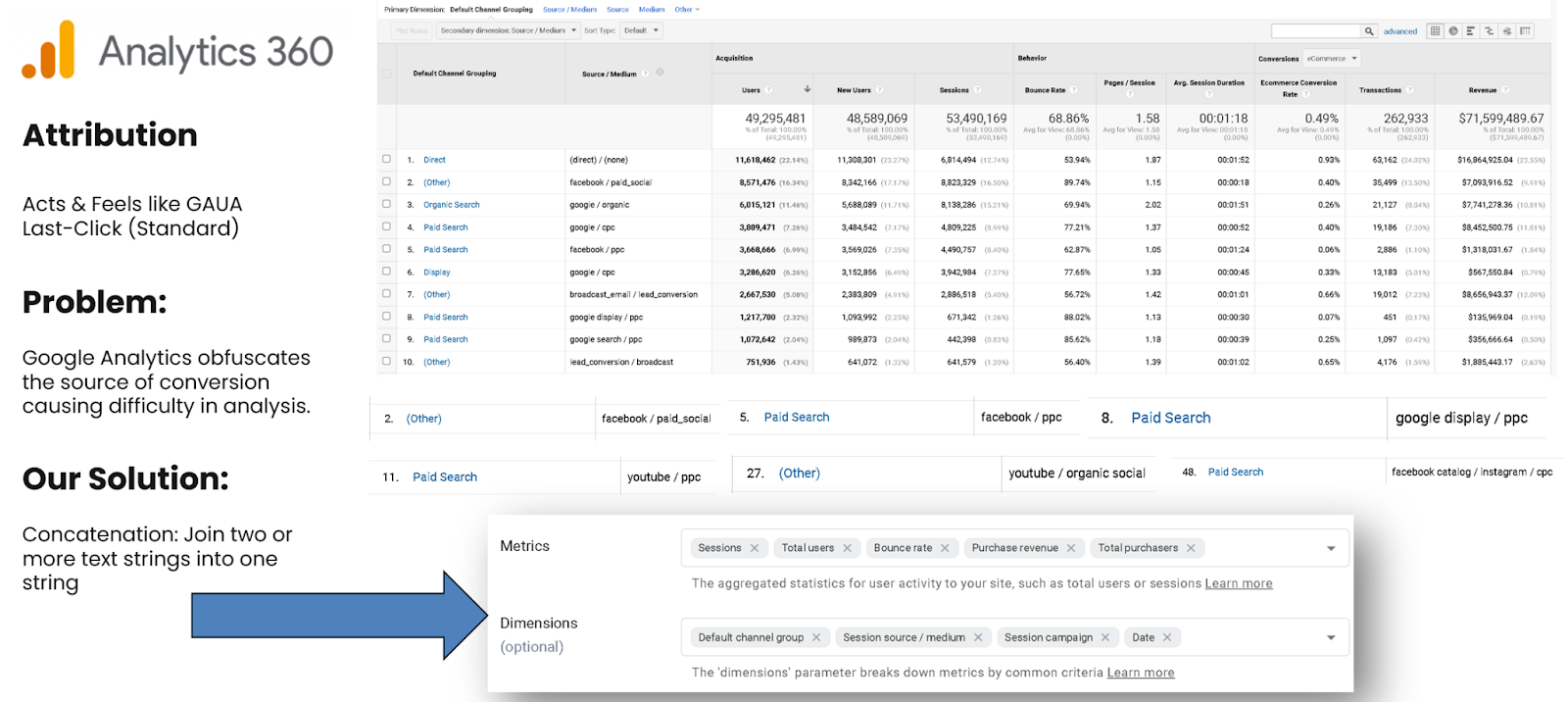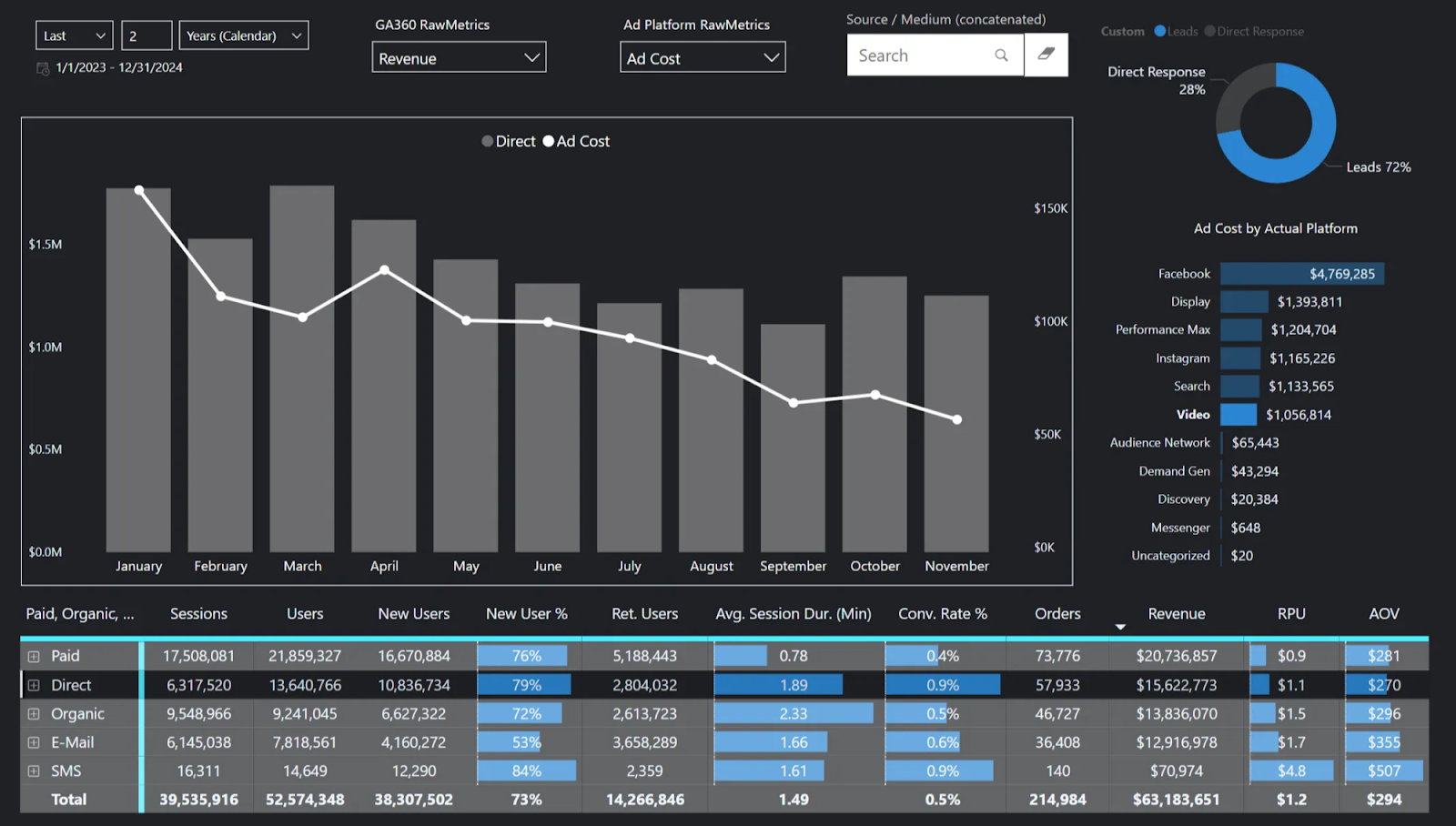Solving The Big Attribution Problem - YouTube
What is Attribution?
Attribution is the process of identifying which marketing channels, campaigns, or touchpoints contribute to a specific user action, usually leading to a sale or a conversion.
The most impactful attribution is how you calculate and assign credit, creating not truth but an idea or path to what has the necessary impact for a goal. This calculation can sometimes lead to a false narrative or draw you into exactly what is having the most impact and everything in between, but like most very complicated outcomes, there is never one easy answer. As I always say, there is no silver bullet in marketing, especially when it comes to attribution.
Good news is, calculating attribution has never been more clear than today with the tools, data, and tracking available.
Take a look at legacy advertising mediums:
TV
Print
Radio
Billboards
We find minimal attribution, and while we trusted those channels in the past, we now live in a Digital-First world where it's almost necessary to understand the impact of a channel. YouTube being one of the most important. Why?
Due to the impact of video.
Users go to YouTube to be educated, entertained, or inspired through video. This makes the platform ripe for engagement. But attribution is difficult to track once you start playing the YouTube game.
That’s why I’m going to show you 3 ways you can effectively analyze your YouTube performance. Because if you can win YouTube, you can win your category.
YouTube Attribution 101
Because of the primary pre-roll, instream placement on YouTube, you find people waiting at least 5 seconds for their content with a skip button present, sometimes sitting through an entire 15 seconds or 30 seconds to get to content on the other side. This is the opposite of someone engaging with content via the feed, where they are scrolling like in Meta or typing a phrase into search with intent on Google. It’s a different journey and user experience leading to a variety of actions that aren’t directly seen with other channels.
So, when trying to calculate the impact of YouTube, it may seem impossible. This leads to marketers never touching YouTube and eventually missing out on the goldmine of opportunities here. But don’t fear, with 25+ clients and nearly 18 years in the advertising game, here’s how I tell the YouTube story:
1. Micro conversions
2. Proxy metrics
3. Multi-attribution sources
Shall we?
1. Micro Conversions
The best solution for YouTube is to take the burden of a full purchase/action and provide an intentional step to get there. This could be through a form, YouTube subscription, time on page, pages per visit, or adding to cart. It’s everything leading up to the big “conversion” metric.
This type of action can be tracked and calculated, providing a higher level of intent for users against your ads, not only showcasing how YouTube can drive intent. This also provides Google Ads with key data points that could help find similar audiences in the future, and if this cohort continues to convert when compared to other marketing channels.
Another micro conversion that creates additional transparency is burning in a phone number, QR code, or URL only sourced to a specific video or YouTube channel to ensure users only connect through these access points.

Example (Above) - You can see that the In-Feed placement not only drove the most impressions at the lowest CPM but proxy metrics Earned Subscribers, Views, and Likes were also higher potentially proving higher micro conversion engagement could yield improved down funnel conversion.
2. Proxy Metrics
These are a little more difficult to analyze.
The primary proxy metrics we like to look at are:
- Google search trends
- search console (organic search)
- Google Ads (brand search)
All of which showcase interest by searching for the brand, either exact or within a phrase. Even though it's a bit more difficult, there comes a higher level intent but also clarity as brand search growth (organic or paid) begins to prove the channel a little further.

Example (Above) - Layering in GA4 Engaged sessions, average session duration, and events per session inside of Google Ads allows you to compare web behavior against other campaigns like Pmax and Brand Search in this scenario

Example (Above) - When comparing google trends to a recent demand gen video campaign (ad spend & CPM highlighted in bottom chart), we find a clear correlation with the spike in interest 4/27-5/4. Large spend on 5/15 helped prolong the momentum while sustained high spend into June aligns with the second wave of elevated search interest.

Example (Above) - Combined correlation chart (Thanks ChatGPT) however keep in mind much easier to see via a smaller lower ad spend campaign.
As a brand grows, channels grow which can make proxy metrics difficult.
We have found that brands that have a heavier Meta (Facebook/Instagram) presence usually find a high amount of searches coming from these platforms. While it’s difficult to segment Google Search data, being able to duplicate through Meta conversion tracking of Google Searches has been key. It allows us to see influxes in Search when we run our YouTube campaigns, turning them on during key periods and off during others.

Example (Above) - A custom conversion created in Meta to help decipher how many Google searches come from our Meta campaigns.
3. Multi-Attribution Sources
We never use one attribution source.
We also do our best to educate our client partners on the bias that exists across platforms. For example, the longest running attribution source is Google Analytics, but only seeing full Google Ads data can sway results. To take this level further, Google Analytics will often source the data, correlating the source, medium, and campaign incorrectly, providing credit to the wrong platform (in most cases).
For e-commerce brands specifically, we like to leverage Shopify as another attribution source. While there is the same issue in assigning channel to performance, we see more direct or undefined traffic when compared to Google Analytics. This makes sense logically as Google Analytics has the power of owning the search engine and majority of websites using it’s free analytics tool.

We use a mix of ETL (Extract, Transform and Load), AI, and Data Visualization to help assign the correct channel while still providing a new look at the underlying data. This helps us understand how YouTube is performing. We take this another step by layering in YouTube advertising data from Google Ads to see if there is any trending correlation with the attribution data to help us get even closer.

Example (Above) - Strong correlation with Lead-focused video (YouTube) spend trending down at the same rate as direct revenue. Direct traffic is technically unattributable but comes with a high conversion rate and the second most revenue for this brand, important to consistently improve by continuing to invest in YouTube.
Leaning Forward vs Leaning Back
From my experience, many clients and advertising professionals have always wondered why Google Ads and YouTube attribution isn’t the best (there are a handful of theories). My guess is that YouTube is a lean-back environment versus platforms like Meta and TikTok, which are lean-forward.
When you are in a lean-back environment similar to legacy, linear TV, action isn’t at the forefront. But when you lean forward, you are much more engaged and ready to take action, like on Meta or TikTok.
So the million-dollar question…
Would you rather have someone reach your website from a click and spend 30 seconds on your website, visiting a few pages or spend 4 minutes with 2+ videos on your YouTube channel?
Wrap Up
With YouTube being similar to Meta in its ability to serve what seems like unlimited impressions, Search is a finite source of inventory.
If I were to assign credit to a platform and shift focus, but most importantly, increase the competition in a biddable environment, why wouldn’t I push more of the conversion action and volume to Search, where I know I can maximize the premium of the impression?
I look at YouTube in comparison to the United States as the middle of America, where Google Search is the inventory on the coasts. Having grown up in the beautiful sunshine state of California, there is only so much real estate inventory on the coast, in comparison with the Search inventory brands protect and compete for every day.
I don’t see YouTube’s attribution challenges changing anytime soon, but there are an immense number of tools and opportunities. Media Mix Modeling, incrementality testing, a variety of platforms that either create their own attribution models or attach their code to every impression, tracking cross-platform and expanding the capability of Shopify and Google Analytics attribution.
We could always look at last click, first click, evenly weighted, and create our attribution based on the touchpoints along the path to conversion. Regardless, every brand needs a strong attribution understanding. We will continue to take a very unique approach to every brand with respect to attribution, learning what captures a users attention to start with what converts them in the end.
